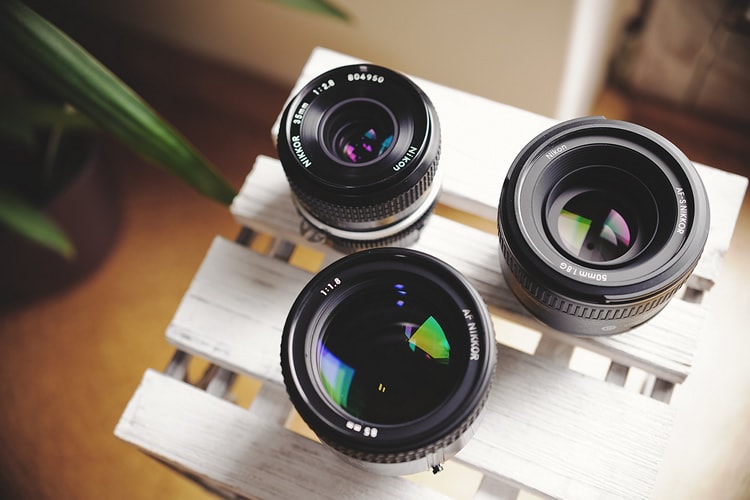Six Places Primes Lenses Outshine Zooms
This isn’t going to be a rehash of the old prime vs zoom debate, that battle is over. With computer-controlled milling, advanced optical coatings and modern engineering zoom lenses are a technological marvel.
In the early days of zoom technology a trained eye could easily spot the difference in quality but not today. I doubt there are many people who can consistently tell zoom from prime just by looking at the pictures. Sometimes a zoom will show some weakness at the extremes of its rated specs but even that is not true of most Nikkor and Canon high end zooms that are tack sharp edge to edge through their entire operating specifications.

photo by 55Laney69
For prime lenses, instead of putting the engineering into optics that move across a focal range, prime lens manufacturers can put all the work into the optics at a fixed focal length. The results can be some spectacular glass at very reasonable prices.
Given the leaps in quality for zoom lenses it’s surprising then that prime lenses seem to stubbornly hang on to their place in photography, refusing to be shuffled off to the bargain bin of history. Some photographers prefer primes but there are some shooting situations where zooms are simply the right choice. Wedding photography would be one example; when you’re constantly moving and shooting there just isn’t time to change lenses.
Yet primes abide and there are some situations where they shine as the preferred alternative. Here are a few situations where primes triumph over their sexy adjustable cousins.
Landscape Photography
The great thing about landscapes is they’re usually not moving real fast and moving a bit to get the frame just right typically is not a problem. Landscape photographers tend to be almost freakishly addicted to detail and for them a high end prime is all most would consider shooting.
Landscape photographers are trying to avoid the slightest hint of barrel distortion and present the most true-to-eye image they can compose. The consistency and clarity they demand is most frequently going to be found in fixed focal length lenses.
Portraits
Often portraits are under controlled conditions or at least controlled lighting and it’s another situation that moves fairly slow and lends itself to prime lenses. For portraits you’ll want to get in a little tighter so a lens like the Bower 85mm f/1.4 is a good choice.
Portraits are another place you can trot out your 35mm prime if you have an APS-C camera or your “nifty-fifty” 50mm lens if you have a full frame camera. Those will produce a consistently flat perspective that works well for portraits.
Food Photography
Food photography is a well paid specialty area that is frequently overlooked by those contemplating a career in the photographic arts. The very best food photographers are booked months in advance and their income is quite healthy. Another commonality among the food photographers I know is they use prime lenses almost exclusively.
In their case the main reasons are consistency and clarity. Most are doing the bulk of their work on tabletop studios and a zoom lens would actually be an inconvenience. It’s much easier for them to move the camera slightly this way or that than change the zoom which can introduce a subtle shift in perspective.
Video
The DSLR video revolution is officially over and video on still cameras has gone back to what it was originally; a way for photographers to grab some video clips while out on assignment. All the same, your DSLR is an insanely good video camera that can produce video on par with some very expensive video cameras.
To shoot good video you have to turn off all your camera’s automatic features, including white balance and auto ISO. For video you expose manually and your shutter speed is limited to 1/50th of a second when shooting video at 24p. Video also requires consistency and that comes from prime lenses.
Time Lapse Photography
The technique of time lapse photography is really just shooting video one slow frame at a time and the execution is very similar. Like video, for time lapse you’ll also turn off auto everything so exposure isn’t hopping around during your time lapse. It’s also another area of photography that prime lenses shine especially for very long duration time lapses.
Architectural Photography
Architecture photographers have their own specialty prime lenses called tilt-shift lenses. They are fixed focal length, but are fitted with gearing that allows the photographer to change the angle of the lens relative to the focal plane of the camera.
Due mainly to the technical aspects of what they do, I’ve never seen a architectural photographer using a zoom. Plus, their subjects aren’t moving very fast. It’s like to see architectural photographers chasing buildings down the street trying to get a shot.
I think even today every photographer should have a couple decent primes in their bag. If you shop around some of the new primes coming out of Samyang under various brands such as Bower and Rokinon offer exceptional quality for the price tag they carry, some comparing favorably to lenses costing thousands of dollars. They really are the best choice for some shooting situations and, for any serious photographer, it’s money well spent.
